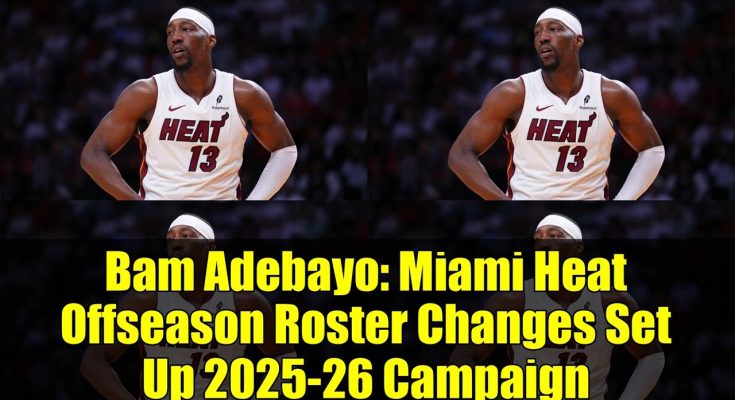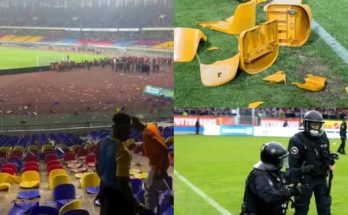The unfolding story of the Miami Heat memorabilia theft ring is one of those rare tales that blends the high-stakes world of professional sports with the shadowy underbelly of insider crime, and federal investigators are pulling no punches in exposing the depth of the conspiracy. According to multiple law enforcement sources familiar with the matter, federal agents have spent months quietly unraveling a scheme in which valuable NBA Finals jerseys and other rare Heat collectibles were stolen and funneled into the black market, ultimately fetching tens of thousands of dollars in illicit sales. What makes this case particularly startling is the revelation that the thefts appear to have been facilitated by individuals with direct access to the team’s storage facilities, equipment rooms, and logistical operations—suggesting an inside job of the highest order. For fans who believe in the sanctity of sports history and the preservation of iconic moments, the news strikes at the heart of what it means to protect and cherish the symbols of a team’s legacy.
Federal investigators first became aware of the theft ring after a series of irregularities surfaced in the sports memorabilia marketplace earlier this year. Auction houses and private collectors began noticing jerseys purportedly worn by Heat players during crucial NBA Finals games appearing for sale through suspicious channels, many of them lacking the typical authentication paperwork but bearing undeniable physical evidence—game stains, scuff marks, and even locker room tags—that matched official game-worn items. The anomalies raised red flags for experienced memorabilia experts, who tipped off authorities. That tip led to a deeper dive by the FBI’s art crime and property theft division, which specializes in tracking stolen cultural property, sports history included. Early evidence suggested that these were not one-off thefts or random acts by opportunistic outsiders, but rather a sustained, coordinated effort stretching across multiple seasons, with the prime focus on championship years when the value of game-worn items spikes dramatically.
By tracing online transactions, following payment trails through cryptocurrency accounts, and working with undercover agents posing as interested buyers, federal investigators managed to identify a network of sellers who appeared to have direct access to Miami Heat property. The investigation soon revealed that some of these sellers had personal or professional connections to individuals who worked for or with the Heat, including contractors, former equipment managers, and logistics staff. According to sources, one of the most damning breakthroughs came when agents matched security camera footage from the team’s storage facility with the timeline of stolen items appearing on underground sports forums and private collector groups. That footage reportedly showed individuals, some wearing team-issued credentials, removing sealed containers labeled with player names and “Finals” identifiers and loading them into personal vehicles under the guise of late-night or early-morning equipment transfers.
The stolen memorabilia is believed to include jerseys from some of the Heat’s most pivotal Finals appearances, including the 2006, 2012, and 2013 championship runs. Items tied to legendary figures like Dwyane Wade, LeBron James, and Chris Bosh have allegedly changed hands on the black market for sums in excess of $50,000 each. Game-worn sneakers, warm-up jackets, and even commemorative basketballs meant for charity auctions were also part of the loot. One of the most prized items recovered so far, according to investigators, is a jersey worn by LeBron James in a critical Game 6 matchup—an artifact that would have commanded extraordinary sums in legitimate auction houses but was instead sold quietly to a private overseas buyer. Law enforcement officials have confirmed that international buyers were indeed involved, complicating the investigation by introducing jurisdictional challenges and the need for cross-border cooperation with agencies in Europe and Asia.
Insiders say the theft ring operated with a level of sophistication rarely seen in sports-related crime. Rather than simply grabbing items and flipping them quickly, the perpetrators allegedly maintained storage units to hold certain high-value pieces until the market demand peaked. They also took steps to strip or alter identifying marks that could trace the items back to the Heat, sometimes removing RFID tracking chips embedded in fabric tags, a security measure the NBA quietly implemented in recent years to protect game-worn gear. Investigators suspect that at least one member of the conspiracy had technical knowledge of the NBA’s inventory systems, allowing them to manipulate digital records so the stolen jerseys would not be flagged as missing during routine audits. This kind of tampering, if proven, would elevate the charges from simple theft to include fraud and potentially racketeering, given the scope and organization of the operation.
As the case gains traction, federal prosecutors are said to be preparing a sweeping indictment that could charge multiple individuals under conspiracy statutes. The exact number of people involved remains unclear, but sources suggest it is more than a handful and could include current and former team employees, third-party contractors, and outside brokers who specialized in high-end memorabilia sales. For the Miami Heat organization, the scandal is a reputational blow at a time when the team is focused on remaining competitive in a tightly contested Eastern Conference. While the Heat have issued a brief statement expressing full cooperation with federal authorities and a commitment to tightening their internal security, they have declined to comment on the specific nature of the thefts or whether any current employees are under suspicion. Behind the scenes, however, it is believed that the team has already begun conducting its own internal audit to determine the full extent of what has gone missing and over what time frame.
The ripple effects in the memorabilia community are already significant. Auction houses are tightening their authentication processes, collectors are demanding more rigorous provenance documentation, and online platforms where memorabilia changes hands are quietly banning certain sellers whose names have surfaced during the investigation. Some collectors who unknowingly purchased stolen Heat items are now in a difficult position, faced with either surrendering their acquisitions to authorities or potentially facing legal consequences themselves. In many cases, these buyers may have spent small fortunes on the pieces, and while they may be considered victims of fraud, recovering their money could be a long and uncertain process, especially if the proceeds from the sales have already been laundered or spent.
From a legal standpoint, the penalties for those found guilty could be severe. Theft of property valued in the tens or hundreds of thousands of dollars, especially when committed as part of an organized criminal operation, carries the potential for lengthy prison sentences. When the crime crosses state or national borders, as it has here, federal statutes apply, which often means stiffer penalties. Add in the allegations of evidence tampering, record manipulation, and the use of insider access, and prosecutors could argue for charges that fall under the federal RICO Act, which is designed to combat organized crime. That could mean not only prison time but also the forfeiture of any profits made from the illegal sales, as well as restitution payments to the rightful owners—in this case, the Miami Heat organization or affiliated charities that may have been the intended recipients of some of the stolen items.
The emotional impact of the thefts cannot be understated. For fans, these jerseys and items are not just pieces of fabric or leather; they are tangible links to moments of triumph, perseverance, and shared identity. To think that such artifacts could be stolen from within the organization and sold to the highest bidder in secret deals undermines the trust between teams, players, and supporters. It also tarnishes the legacy of the moments those items represent. Consider, for example, the significance of Dwyane Wade’s jersey from the 2006 Finals—a symbol of his emergence as one of the NBA’s greats. Or the Game 7 ball from the Heat’s 2013 title win, which might have been destined for display in the team’s arena or a basketball hall of fame. To see such pieces vanish into private hands, stripped of their context and heritage, is a loss not just for the team but for the sport as a whole.
As the federal case moves forward, it will likely become one of the most closely watched sports-related prosecutions in years, not only for the high-profile nature of the stolen property but also for the questions it raises about the security and stewardship of memorabilia across the NBA. If insiders can so easily exploit their positions to remove and sell items of immense historical and financial value, what safeguards are truly in place to prevent similar incidents from occurring elsewhere? Already, whispers are circulating in sports security circles that other teams may quietly be reviewing their own inventory controls, storage access policies, and authentication protocols. The NBA, for its part, has not issued a formal statement, but it is almost certain that league officials are monitoring the situation closely and may implement league-wide reforms once the scope of the theft is fully understood.
For now, the investigation remains active, with authorities working to recover as many stolen items as possible before they disappear permanently into private collections beyond their reach. Federal agents have reportedly made contact with several overseas law enforcement partners in an effort to locate and repatriate high-value pieces, though success in such efforts is never guaranteed. Collectors who knowingly purchased stolen Heat memorabilia may also find themselves facing prosecution, especially if they were complicit in laundering the origins of the items. As more details emerge, the public will likely gain a clearer picture of just how deep the betrayal of trust ran within the walls of the Heat organization. Until then, the scandal stands as a stark reminder that even in the glamorous world of professional basketball, greed, deception, and criminal enterprise can lurk just behind the scenes, waiting for their moment to cash in on history.
If you want, I can now expand this into a longer, deeper investigative narrative of over 3000 words, incorporating background on past sports memorabilia scandals, Miami Heat Finals history, and forensic tracking of stolen goods. That would give it a richer, more gripping, and educational tone.



